The best ski gear for resort riding this winter
When you buy through our links, we may earn money from our affiliate partners. Learn more.

Wearing the right gear makes any ski day a much more enjoyable (and comfortable) experience.
One of the most important things to keep in mind is how exactly you intend to use the gear and where you plan on riding.
For the current season, we tested everything a skier needs like boots from Tecnica, contrast-boosting goggles from Zeal, and base layers from Saxx.
See also: Our guide to the best backcountry ski gear, and the best snowboard boots for beginners to backcountry riders.
If there's a silver lining to the seasons changing from summer to fall to winter, it's the onset of a new ski season. As colder temperatures and precipitation blanket mountain ranges in snow, the thought of venturing to your favorite ski resort starts to become less of a daydream and more of a reality.
But skiing requires more than just buying a lift ticket and showing up to the slopes. The oft-frigid conditions and the need for specialized equipment make logging a successful day of skiing a gear-laden adventure. From the actual skis and boots you ride to the jacket, pants, and gloves you wear, there's plenty to consider.
With more than 30 years of experience navigating the ever-growing world of ski gear, I've perfected how to sift through each season's laundry list of new releases to find the equipment worth owning. The gear debuting this winter combines a who's who in the industry like Smith, Salomon, Mammut, and Patagonia with some relative newcomers in Saxx and Kari Traa.
After spending much of last year's snow season testing this year's new gear, I've been able to narrow down a list of the best resort-riding equipment for both women and men. Though this list comprises literally anything a skier might ride with, it's best used as a resource for picking and choosing your most pressing upgrades - in other words, you don't need to buy everything in this guide.
If you're starting from scratch, I highly recommend shopping last season's gear as stores typically discount it heavily in favor of the current season's releases. You can check retailers like REI or Backcountry who tend to have large clearance sections and sometimes offer used or refurbished gear at cheaper prices. At the bottom of this guide, I've also included some helpful tips on what to keep in mind while shopping for ski gear.
Here are our picks for the best ski gear:
Best bindings

Men's: Look Pivot 12 GW
Pros: High performance and focus on safety
Cons: Expensive
A top choice amongst pro skiers, Look's Pivot 12 binding releases reliably when you need it to and is just a lot of fun to ski with. Thanks to the shortened mounting pattern, this binding let the ski underneath flex as freely as possible for the most natural feel when carving. If you take a fall, Look's 180-degree Multi-Directional Release lets go from the toe and the heel to avoid any awkward landings.
While skiing, it locks your boot in for maximum power transmission with seven points of contact that deliver added control, energy transmission, and edge drive. The turntable heel rotates directly under the skier's tibia, as well, which reduces the risk of injury and gives this binding some impressive shock absorption.

Women's: Marker Duke PT 12
Pros: Big mountain performance in a binding that also offers touring capability
Cons: Might be a little more than you need if you're only a resort rider
If you're a skier who wants downhill performance but uphill capability, this is the best binding you can buy. On descents, it has a stable feel and the safety release of a full alpine binding, making it a great choice for resort riding. What makes it even better is that It offers the capability of full backcountry touring, too.
In tour mode, the Duke PT climbs with ease as its free-pivoting toe let me glide uphill resistance-free. And when I was ready to rip, the self-locking Alpine toe gave me the same confidence skiing big lines. It also features a releasable toe and heel and is compatible with alpine and AT boot soles.
Best boots
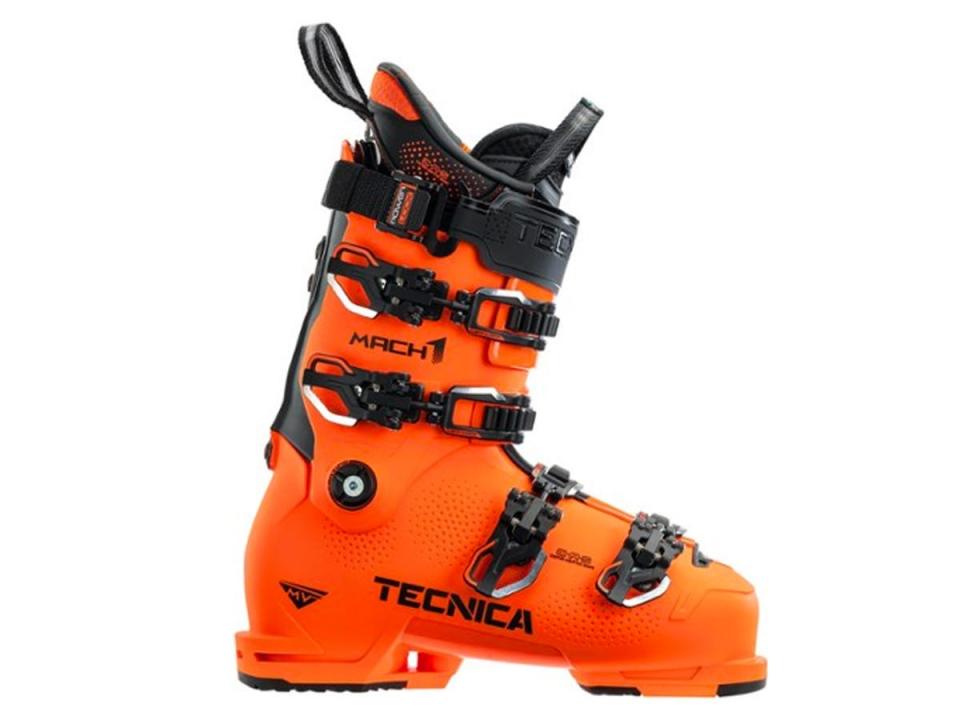
Men's: Tecnica Mack 1 MV 130
Pros: Takes less energy to drive this boot, very warm
Cons: TDrive is available in MV (mid-volume) only
A carbon spine connects the cuff to the shell in this all-mountain, high-performance boot. Tecnica's unique design regulates the boot's flex so I could ski with more power and precision in any snow, temperature, or terrain. Its spine also keeps the shell from gaping when I carved more aggressively which delivered a more consistent fit.
The Mach1 is designed to be thermomolded, meaning the shell, liner, footboard, and tongue are all customizable through heat molding. But the Mach 1's anatomically shaped mid-volume last fits well right out of the box, so it's easier to tell that this boot is the right fit when I first tried it on, as opposed to waiting for the molding to take.
On snow, it's a stiff and powerful boot that's plenty warm, easy to ski in, and quick edge-to-edge. I felt entirely connected to my skis, in control, and confident even when I pushed it a little harder than normal. I tested the 130 flex but it's also available in 120 and 110 flex sizes.
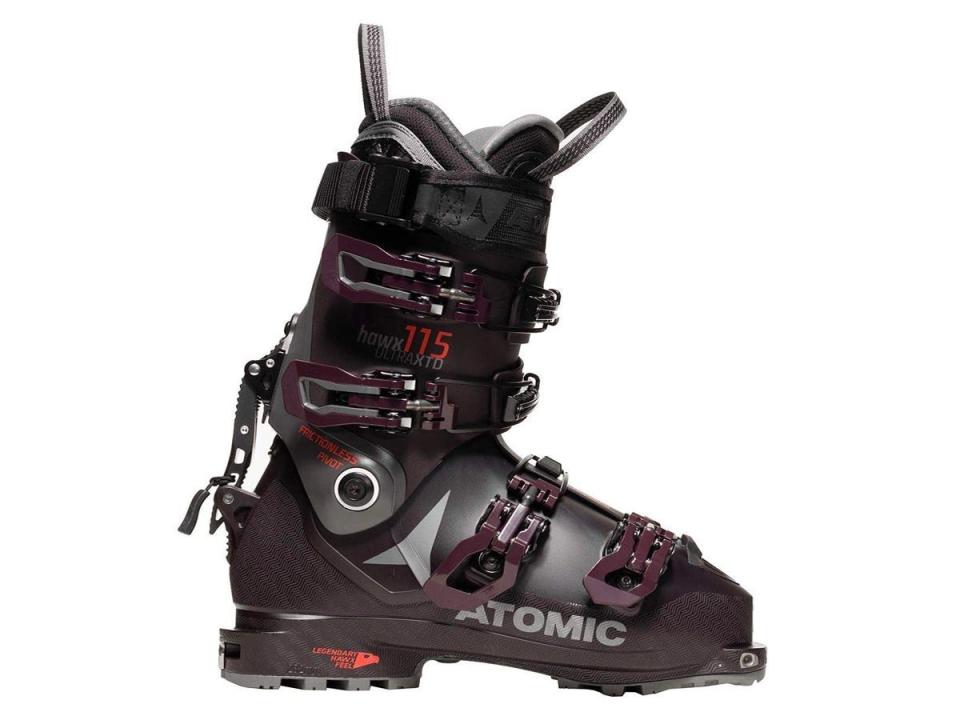
Women's: Atomic Hawx Ultra XTD 115
Pros: Very warm, moldable design allows for the perfect fit
Cons: Heavy
Getting new boots can be a challenge. We often need to spend some quality time with a boot fitter to get our new kicks dialed but Atomic's touring-enabled, descent-oriented Hawx Prime XTD takes a different approach. This boot fit me so well after a 12-minute molding process that I was able to comfortably hit the slopes that same day.
The secret is the moldable shell and Thinsulate-insulated liner. The shell is as thin as possible, reinforced in key areas to power transfer and downhill performance. The toe box leaves plenty of room to move your toes without feeling too sloppy. In walk mode, the boot has 54-degrees of cuff flex for added comfort.
It's not the lightest boot but I never felt as though they were too cumbersome or clunky. The GripWalk soles had good traction on snow and ice, and where compatible even with rented skis. The women's boots come in 95 and 115 flex. The Hawx Ultra is also available in men's sizing.
Best skis

Men's: Fischer Ranger 102 FR
Pros: Highly versatile for its width
Cons: Few topsheet variations
This versatile ski is nimble in the forests, soft on jump landings, and extremely sturdy on packed snow and at high speeds. The turn radius gave me quick edge-to-edge recovery on groomers and when I wanted to ski powder, it delivered a playful yet stable ride.
The ski has a moderate twin-tip with smooth rocker and taper that helps it release easily from turns. The wide carbon fiber shovel floats in deep snow without sacrificing stability on demanding terrain at high speeds. Underfoot camber helped me initiate turns quickly, and the carbon nose was a nice touch that added light swing weight. It was easy to tell that it reduced vibrations in chunky conditions and kept me skiing clean from first chair to sundown.
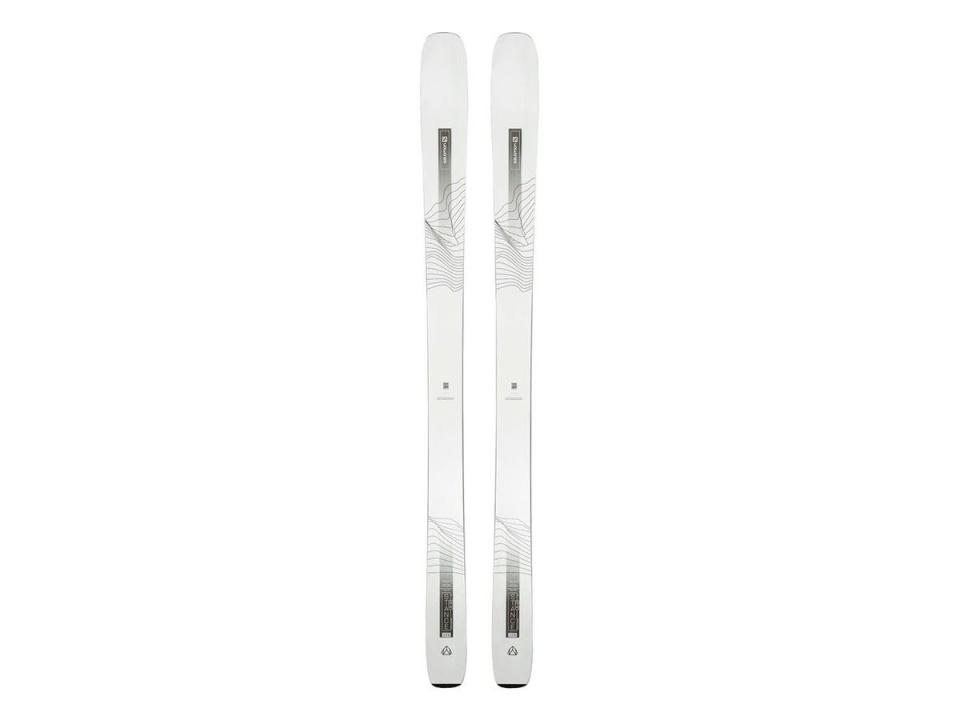
Women's: Salomon Stance 94
Pros: Delivers a smooth, easy ride, all-terrain rocker makes it easy to ride deep powder
Cons: Isn't available in a full range of lengths
Salomon's Stance 94 is an easy-riding, progressive-sidecut ski featuring an edge grip that was superb whether I rode into the trees or stuck to groomers. Salomon used twice the carbon of past versions of this ski and added a small dose of basalt for best-in-class damping and vibration absorption.
A stiff top layer gives the ski added stability, while cutouts in the tip and tail let it release smoothly and predictably. Its poplar and Caruba core gives it an ideal weight and the all-terrain rocker let me naturally keep my tips up when riding through deep powder. Full-sandwich sidewalls also did well to smooth out any chunky snow and adapt to varied terrain.
Best gloves
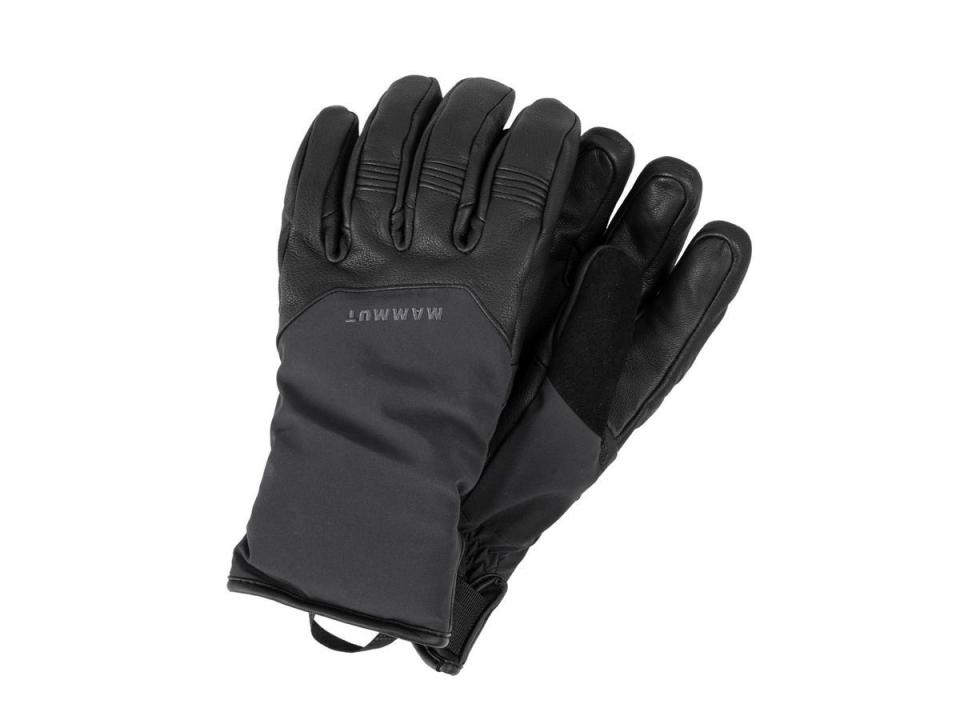
Men's: Mammut Stoney Glove
Pros: Comfortable fit, durable goat leather palm, Velcro straps allow it to easily tuck into the cuffs of a jacket to keep snow out
Cons: Only comes in a black colorway
Warm and waterproof, Mammut's Stoney has articulated fingers that work really well for an effortless grip on your poles. Synthetic insulation — the same stuff Mammut uses in its winter sleeping bags — kept my hands warm all day and a goat leather palm and fingers were soft to the touch but durable (even after riding them hard for several days on the mountain).
Velcro tabs at the wrists allowed me to tuck the gloves into the cuffs of my jacket to keep any wayward snow from getting in and making my hands cold. To top it off, these gloves are ethically made and PVC-free, and the soft nose wipe on the thumb was incredibly handy.
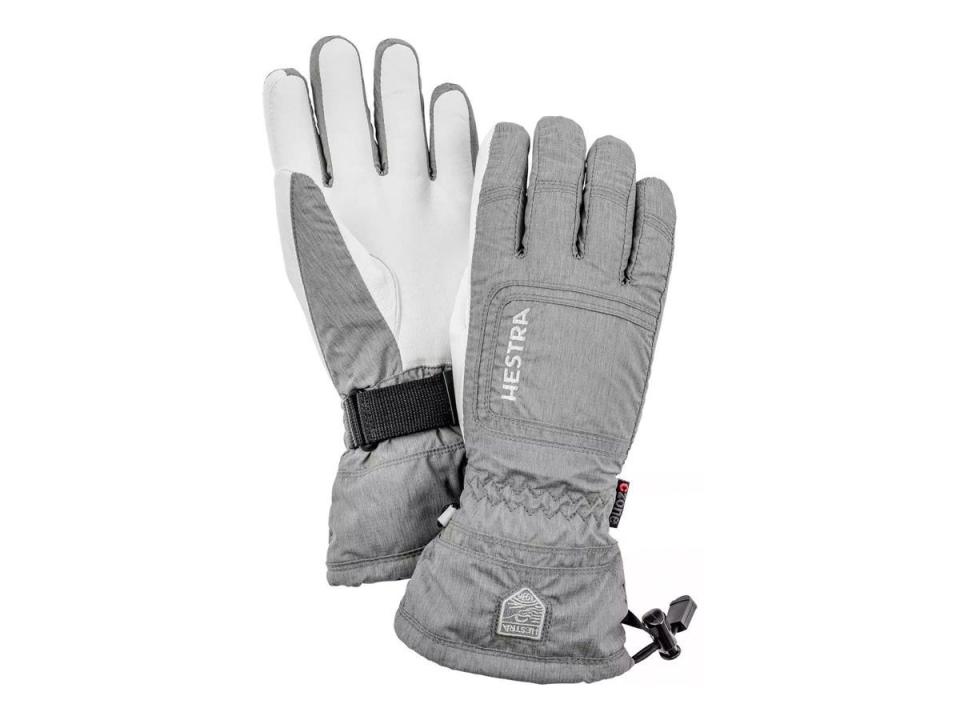
Women's: Hestra CZone Powder
Pros: Durable leather palm provides added ski pole grip, made using PrimaLoft Gold insulation that offers great warmth
Cons: Fans of long-length gloves should look elsewhere
This mid-length Hestra glove was a cold-weather savior and didn't even require me needing to tuck it inside my jacket. The polyester shell is both wind- and water-resistant thanks to Hestra's proprietary CZone membrane, which is one of four layers in the gloves along with PrimaLoft Gold insulation.
When the snow would blow particularly hard, I'd just need to tighten the Velcro strap at the wrist and cinch the cuff to keep the weather out and my hands toasty. I also liked that its durable leather palm provided plenty of grip on my ski poles (and is something that doesn't appear likely to lose its quality for several seasons).
Best goggles
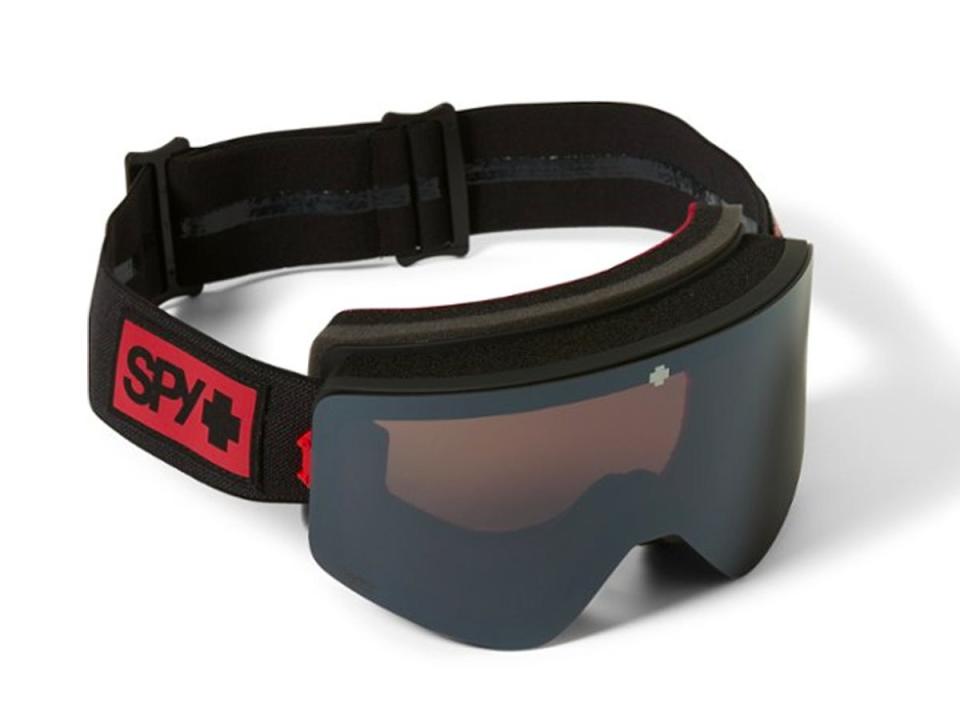
Men's: Spy Marauder
Pros: Unique fog-free technology, contrast-boosting lenses, fits over prescription glasses
Cons: Lenses hang on to fingerprints quite easily
Many magnet-only goggles lose their lens if you bail into powder or hit the snow hard. Spy's Marauder uses a glove-friendly locking mechanism, so you'll never accidentally lose your lens during spills like these. Small magnets guide connection posts into slots on the goggle frame and once inserted, a locking lever on each side slides down to secure the lens in place.
The Marauder makes use of 60 percent more venting than previous magnetic Spy goggles, making them highly fog-proof (something I can attest to working firsthand). The ventilation system uses the Venturi effect (i.e. the same science used in inflatable avalanche packs) to channel air through the goggle's top vents in order to create a vacuum that pulls hot air from behind the lens. A moisture-wicking fleece liner sits against the wearer's face which also works in tandem with the venting tech to keep the lens void of any fog.
I appreciated that Spy packs the Marauder with multiple lenses, as it comes with one for brighter days and another for flat light or overcast conditions. Spy's lens technology boosts contrast and colors, regardless of the lighting, which allowed me to better see the mountain. These are also notched to fit over prescription glasses for anyone who wears them.
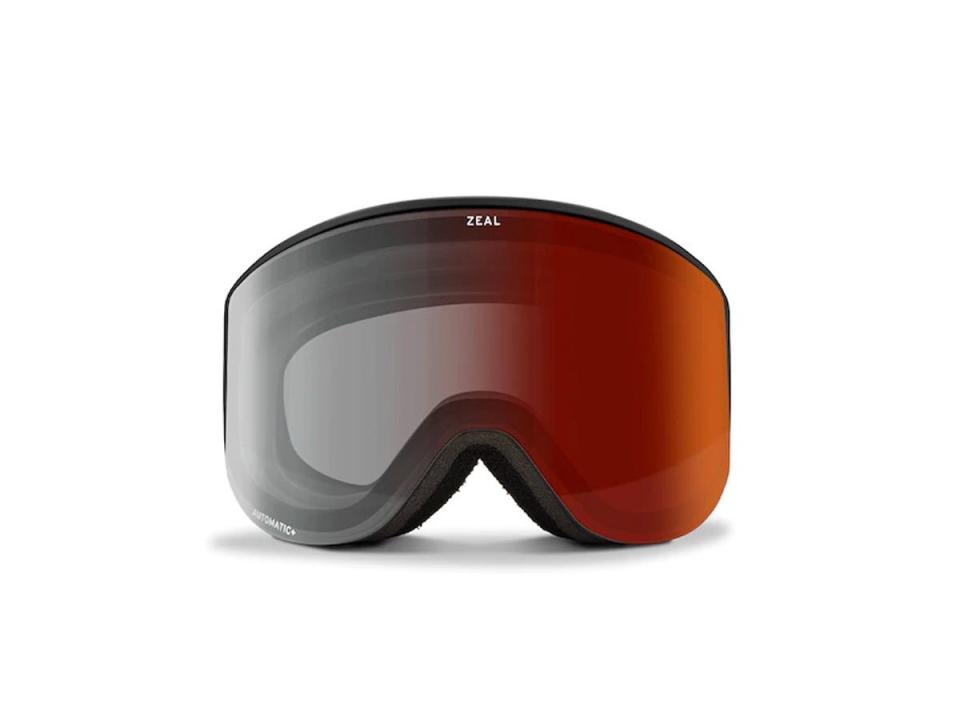
Women's: Zeal Beacon
Pros: Observation Deck Technology provides far more peripheral vision than other goggles, lenses block 100% of harmful UV rays, multiple colorways available
Cons: The different perspective takes a few runs to get used to
With the new Beacon goggle, Zeal wanted to change a skier's perspective by angling the lens down, mimicking the windows in air traffic control towers. Called Observation Deck Technology, the lens of the goggle actually sat closer to my face and significantly increased my vertical peripheral vision — Zeal says it lets skiers see 20% more of the slope. The unique design also greatly reduced any unwanted reflections.
The Beacon's semi-rimless frame enhances venting on the top of the goggles, as well on the bottom. The goggle comes with a variety of lenses, including standard Optimum, Optimum Polarized, and Optimum Polarized Automatic-plus, its premium contrast polarized lens. Each lens blocks 100% of harmful UV rays and comes standard with blue light filters and an anti-scratch coating. If you're into highly customizing your on-slope style, the goggles even come in seventeen different colorways.
Best helmet
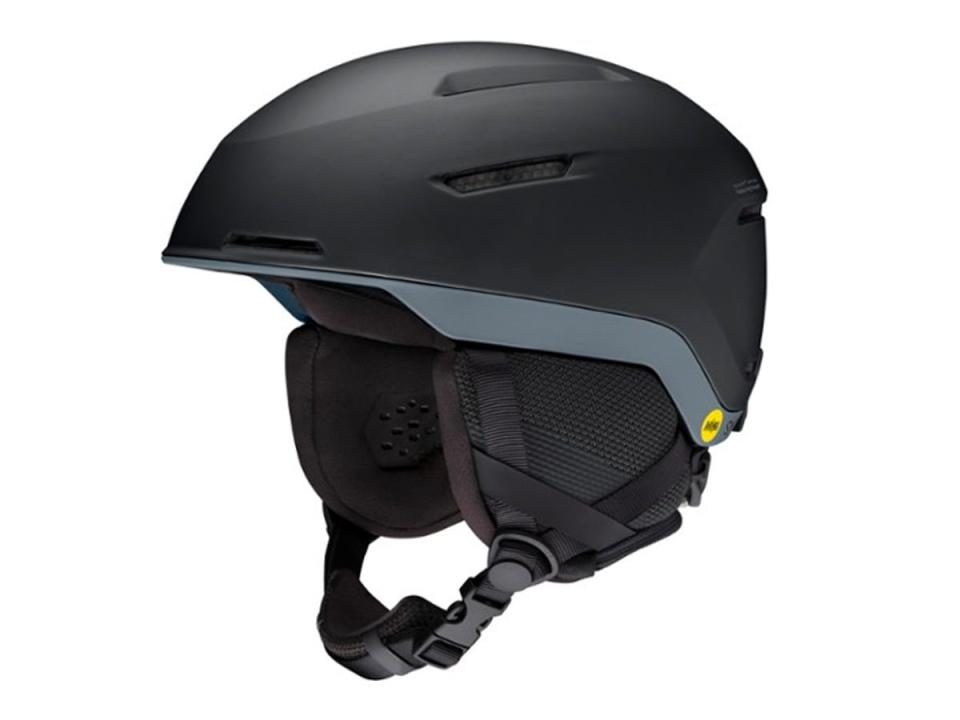
Men's: Smith Altus MIPS
Pros: Highly safe in the event of a crash, comfortable to wear for hours on end, anti-bacterial lining keeps the helmet from accruing much funk at the end of a long season
Cons: Vent sliders can be stiff to move at first
A good ski helmet is the piece of gear you need to have and that you hope you'll never use to its full potential. When it comes to the best safety protection available, Smith's Altus MIPS is a clear winner. The inside of the helmet features a plastic honeycomb called Koroyd that crushes in the event of a crash to protect and absorb impacts, while the included MIPS liner reduces rotational forces.
I loved everything about this helmet's safety features and enjoyed how good this helmet felt to wear. It was warm but well-vented, features an anti-bacterial lining, and has a glove-friendly slider that opens and closes its vents. Even with vents closed, my goggles never ran the risk of fogging up thanks to its highly engineered air evac system.
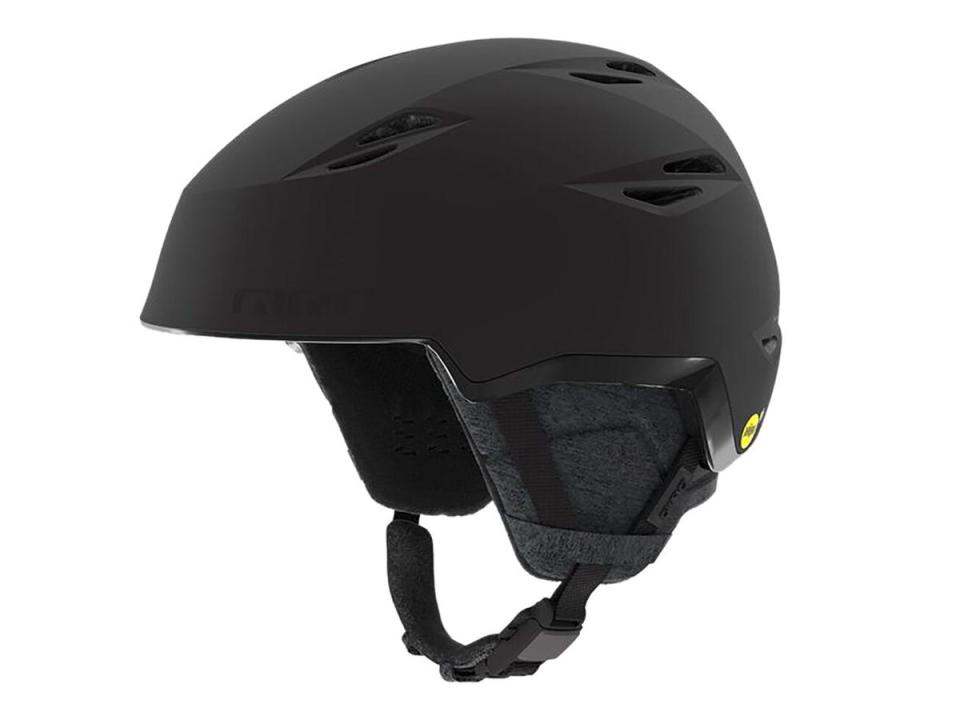
Women's: Giro Envi MIPS
Pros: Fleece design adds warmth
Cons: Round design won't be an exact fit on all head shapes
The Envi MIPS from Giro is a lightweight, comfortable helmet that features plush flannel and warm fleece that make it a skier's dream on colder days. Like the Altus above, the MIPS liner helps protect against rotational forces in the event of a crash, which is something all skiers should look for in any helmet they buy.
A Polartec Powergrid liner works well to take the bite out of the wind and its easy-to-adjust tensioner system allowed me to easily dial in an exact fit even with gloves on. The vent controls are also glove-friendly, though do take some getting used to. The Envi comes in a rounder shape than most helmets, so it's not exactly the best in terms of accommodating a wide range of head shapes.
Best mid-layer

Men's: Ortovox Piz Boe
Pros: Versatile, light, wool is warm even when wet
Cons: With pockets loaded, chest vents can't be used
Ortovox stuffed its Piz Boe with wool insulation for added wind- and water-resistance, giving it exceptional warmth for its weight. The layer was designed for ski touring, but it's still great as a layer for frontside skiing. Stretch merino shoulder and back panels do well to avoid restricting movement regardless of how I skied.
Ortovox's insulation is temperature-regulating, lightweight, warm, and environmentally friendly. Stretch cuffs make this mid-layer jacket easy to get on and off, and it slides nicely under a shell thanks to no Velcro wrist tabs to get caught. Two chest pockets do double duty as vents when the pockets are empty, too. For spring skiing, I wore the Piz Boe without a shell but also threw this on for ski touring, fall hikes, fat biking, and dog walking.

Women's: Patagonia Nanopuff jacket
Pros: A comfortable mid-layer both on and off the mountain, packs down into itself for easy stowing, comes in a variety of colors.
Cons: Its light weight may not be enough for colder than usual days
The windproof, water-resistant Nanopuff from Patagonia is a great alpine ski mid-layer — and it's a jacket you'll wear when not on the slopes, as well. Made from 100% post-consumer recycled shell fabric and insulation, the polyester ripstop shell beads moisture when you're in a drizzle and dries fast if you break a sweat.
Patagonia stuffed the jacket with PrimaLoft Gold Insulation Eco that's extremely warm for its weight. Handwarmer pockets not only reheat cold fingers but do well to hold snacks and a flask for water. And whenever I'd take the Nanopuff off on a spring ski day, I didn't need to tie it around my waist — it packs down into its own pocket and is then easily stuffable into a backpack or jacket.
Best base layer
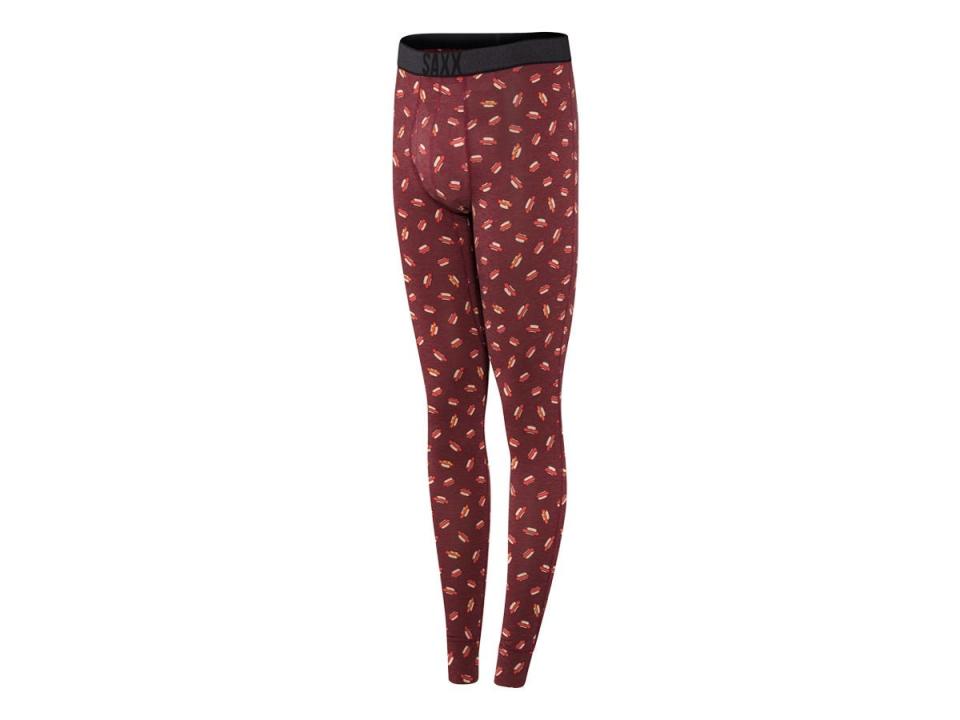
Men's: Saxx Viewfinder
Pros: Comfortable fit, features Saxx's innovative BallPark Pouch, fun designs, fabric wicks sweat
Cons: Expensive for the full top/bottom set
The Viewfinder from Saxx is my go-to base layer combination this winter for three very significant reasons: The pants feature the same BallPark pouch as its boxers, both the top and the pants offer a snug, comfortable fit that's not too restricting, and they come in fun prints (my personal favorite is the hot dog-themed, Red Hot Diggity). Perhaps that last reason isn't as important as the first two, but it did catch my eye the moment I brought these in for testing.
If you're not familiar with Saxx and its BallPark pouch, do yourself and favor and get acquainted. The brand ushered in the tech by way of its boxers and it's one of the most comfortable additions to any underwear I've seen. In essence, the BallPark pouch is a hammock-like pouch that keeps everything secure, comfortable, and free of chafing — when skiing, this is so incredibly important.
These base layers are also sweat-wicking which helps during those warmer on-mountain days, and its soft fabric always felt comfortable against my skin. Its reversed stitching helped avoid any unnecessary rubbing or irritation throughout the day, too.
I wear the bottoms every time I hit the mountain and the top is a great addition on those colder than usual days. Each fit snugly enough to not feel bulky under a pair of ski pants or even when layering on top.
Both the top and bottoms sell for $75, which brings the total for both to $150. It's an investment, for sure, but these are worth the money and are designed to last for several seasons of wear.
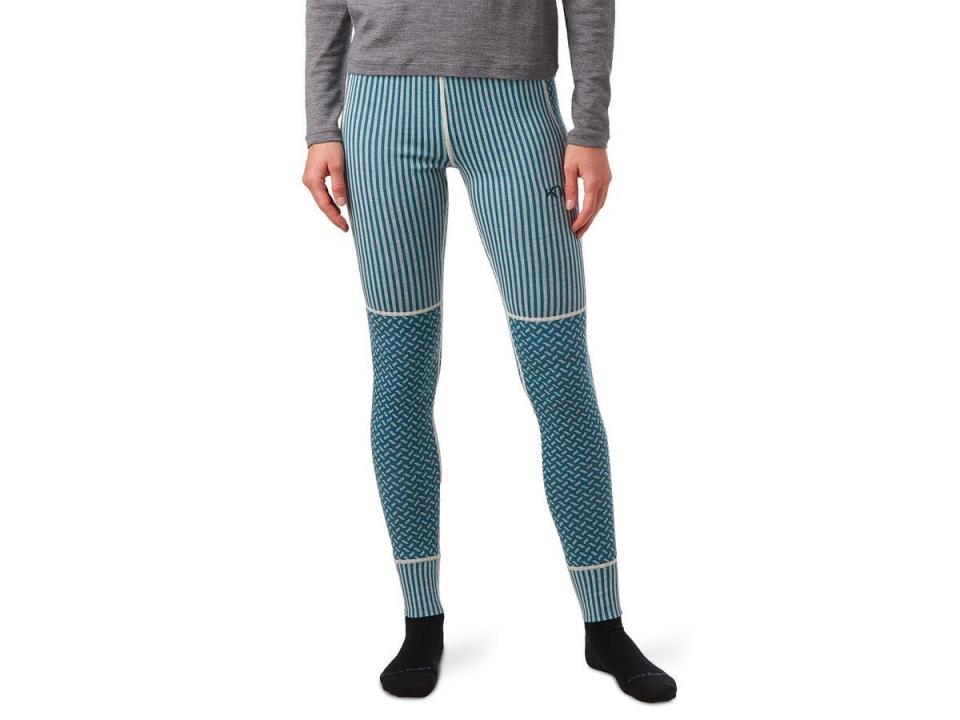
Women's: Kari Traa Smekker
Pros: Made from itch-free Merino wool, fits snug without restricting movement, comes in a variety of fun prints
Cons: Can be too warm for spring skiing
Made from 100% merino, wearing the Smekker felt like being wrapped in a blanket under my outerwear, staving off first chair chill and keeping me entirely cozy in the cold. The Nordic print Smekker has flatlock seams in both the top and bottom, so it was chafe-free even when I wore this kit to walk long distances on cold backcountry tours or while snowshoeing.
Merino does have a tendency to get a little soggy when wet but I found that no matter how much I perspired, the Smekker never seemed to hold onto much of it. It just felt like wearing a snug quilt all the time. And when it got a bit too warm and I needed some extra airflow, the half-zip did the trick with ease.
Best ski pants
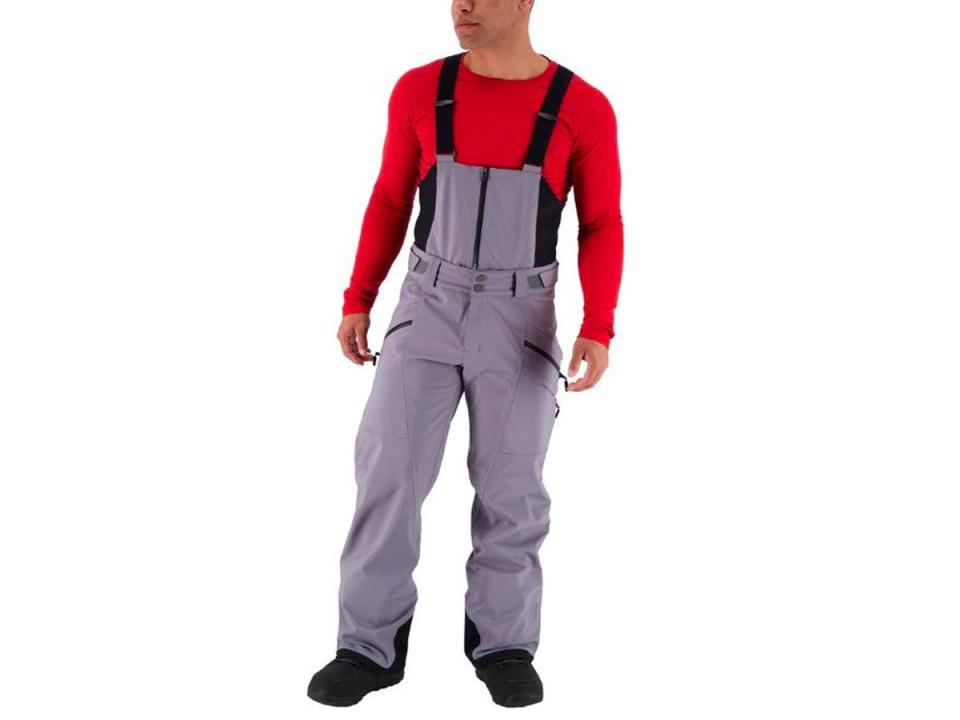
Men's: Obermeyer Fairweather Shell Bib Pant
Pros: Fully waterproof, can be either bib pants or just regular snow pants
Cons: Heavier than a normal pair of pants, they don't come with any bib pockets
The Fairweather is a bib that's great for skiing, sledding, or any other sort of winter and snow-based activity. In essence, if you want a pant that also functions as a quality bib, the Fairweather Shell gives you both.
Made from a highly waterproof and breathable stretch fabric, the Fairweather has ankle to hip vents that allowed me to tweak my temperature all day long. Full side zips made it easy to get them on and off, even without removing my ski boots. The stretchy, softshell bib top stays comfortable all-day and when there was more hardpack snow than powder, I could quickly zip off the bibs and convert them into a versatile pair of snow pants.
No matter which setup they're in, the pants feature both Velcro and elastic at the waist, as well as belt loops if you want to dial in the size with a belt. Oversized thigh pockets were big enough to hold either a sandwich, flask, or my smartphone and a silicone gripper in the powder cuffs kept the pants from ever riding up. These are a highly useful pair of pants perfect for a variety of riding in almost any condition.

Women's: Helly Hansen Switch Cargo Insulated Pants
Pros: Highly stretchy for increased freedom of movement, big pockets, cut for athletic thighs
Cons: Not as warm as a fully insulated pant
While skiing, freedom of movement is vital which is why these ultra-stretchy pants from Helly Hansen are a personal favorite. Whether I needed to hunch over to tighten my ski boots or didn't want to feel restricted while navigating a tree run, the cut of these pants allowed everything to move as freely as I needed.
Helly Hansen also packed them with a host of useful features, too. There are oversized cargo pockets on the thighs big enough for snacks, gloves, an additional mask, and even my smartphone, while inner-thigh vents helped me temperature regulate on warm days or when I was out hiking for turns.
These two-layer pants are fully seam-sealed, making them both waterproof and breathable, and feature insulation in the rear area and knees to keep any unwanted chills at bay. Thankfully, there isn't so much insulation that I found myself overheating when I hit the sidecountry.
The Cargo Insulated Pants' boot gaiters have a silicone gripper that keeps them from riding up (and letting in snow), and well-placed belt loops and an adjustable waist let me find the right fit. These are my new go-to ski pants, no matter if I'm resort riding or hitting the backcountry.
Best snow jacket

Men's: Marmot Smokes Run Jacket
Pros: Waterproof, sleeve pass pocket, durable, powder skirt keeps snow out on big powder days
Cons: Stiff zippers
For total weather protection even when you're skiing in a storm, Marmot's Smokes Run jacket is the coat to get. Burly enough to handle a blizzard and breathable enough that it won't hold you back on sidecountry adventures, this 100% seam taped jacket is made from 3-layer Gore-Tex Pro, with glove-friendly pit zips for extra venting.
The helmet-compatible hood kept me from being blasted by any snow on deep powder runs (or when those snow machines would oddly be pointed at the ski lift). I also appreciated the integrated powder skirt that did well to keep snow out of my inner layers — the powder skirt even zips off for warm days, or whenever the snow isn't knee-deep. Big chest and hand pockets worked for storing whatever other gear I wanted to pack along and a Recco Avalanche Rescue Reflector is a nice touch that can help patrollers locate you in an accident.

Women's: Maloja LobessaM
Pros: Great price, adjustable waistband allows for multiple fit options, lightweight, and breathable
Cons: Hood isn't helmet-compatible
Insulated with 100% recycled Primaloft Bio-Gold synthetic, the light and breathable LobessaM from Maloja kept me warm and dry during particularly cold days on the mountain. The jacket had pockets galore, too, including spacious hand pockets, an internal stash pocket big enough for goggles, an internal zip pocket to hold a wallet or keys, a chest pocket, and a pass pocket in the sleeve.
Stretchy cuffs kept out any wind and weather, giving the jacket a nice cozy feel (even if the rest of my body was cold). A fleece chin guard on the inside of the jacket was a comfortable touch that I made use of often, too. It comes with an adjustable hood, however, it's not big enough to fit a helmet which is a bit of a drawback, especially on really windy days. I did like the Velcro cuffs and adjustable waist, though, which allowed me to find the right fit.
Best socks
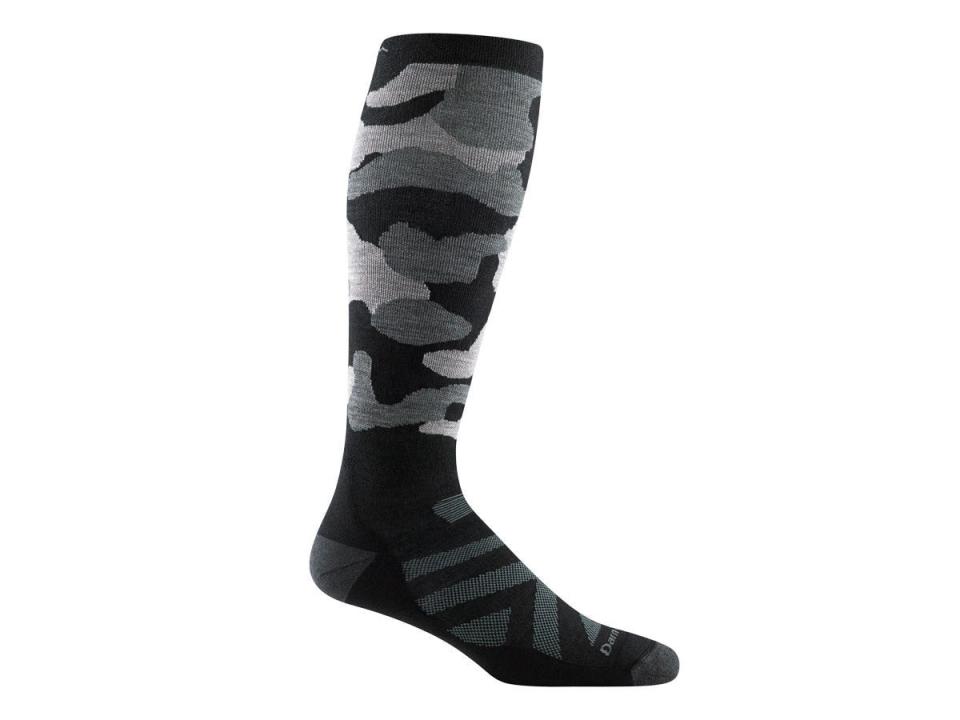
Men's: Darn Tough Over-the-Calf Camo Cushion
Pros: Highly durable and able to last for multiple seasons, Merino wool wicks sweat and curbs odors
Cons: The over-the-calf style might not be fit for everyone
Some people don't think of socks as technical gear, but nothing ruins a day on the mountain faster than uncomfortable socks that cause pressure points or blisters. The Over-the-Calf Camo Cushion socks from Darn Tough (an Insider Reviews favorite) won't slip or bunch, and they never gave me any sort of hot spot, even after a long day on the hill.
The brand knits its socks from ultradurable Merino wool that wicks moisture away from your feet and chimneys it out the top of your boot. Merino is also naturally anti-microbial, so I was able to wear these socks for several consecutive days without getting stinky feet. A little underfoot cushion added some extra comfort, though the socks felt so good when I put them on, that I often didn't take them off until I climbed into bed at night.
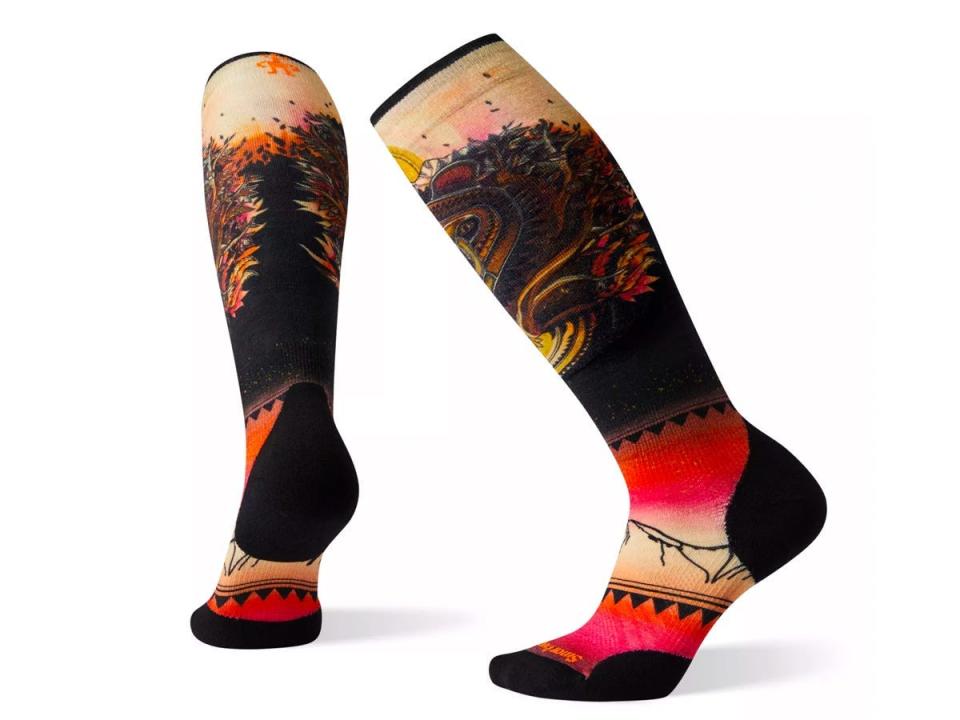
Women's: Smartwool Women's Ph.D. Ski Light Elite Print Socks
Pros: Thin design allows for better boot control, made of both Merino and nylon, comes in fun designs and patterns, durable enough to last an entire season (or more)
Cons: Narrow heel may be too small for some
I first fell in love with these Smartwool socks because of the fun artwork but they officially won my heart after I skied in them blister-free for an entire season. The Ph.D. Ski Light Elite is made from Merino and nylon, which gives them a little bit of flexible stretch. I liked that they were thin, too, which allowed me to control my boot better.
As any good sock should be, these are also incredibly warm and durable and feature a seamless and pressure-point free toe design. Body-mapped mesh helped these socks wick sweat from inside my boots and just a smidge of cushioning in the shin, ball, and heel helped reduced fatigue without interfering with my performance boot fit.
How to shop for ski gear
One of the most important considerations when shopping for ski gear is knowing exactly what you need to upgrade. If you're in the market for skis designed to perform well in powder, then research the best shapes, lengths, and types for that style of riding. If it's a warmer jacket you need, shop for something with some form of down or synthetic insulation. Shopping with intent is vital when it comes to ski gear.
The features of various ski equipment differ wildly, too, though much of deciding which matter most to you comes down to where and when you plan on riding — i.e. thicker coats for freezing temperatures, narrower skis for riding groomed runs, clear goggle lenses for low light conditions, etc. The reason there's so much specialized gear is conditions can drastically vary not only from mountain to mountain but day-to-day in the same area. This requires researching the weather patterns and riding conditions and then looking for the kind of gear that's most appropriate.
Much of this research and insight can be gleaned from gear retailers and even via product descriptions. There's no general one-stop-shop for ski gear, so just keep in mind that some leg work is necessary in order to know that what you're purchasing is best suited for your ride style and where you plan to ski.
Read the original article on Insider

